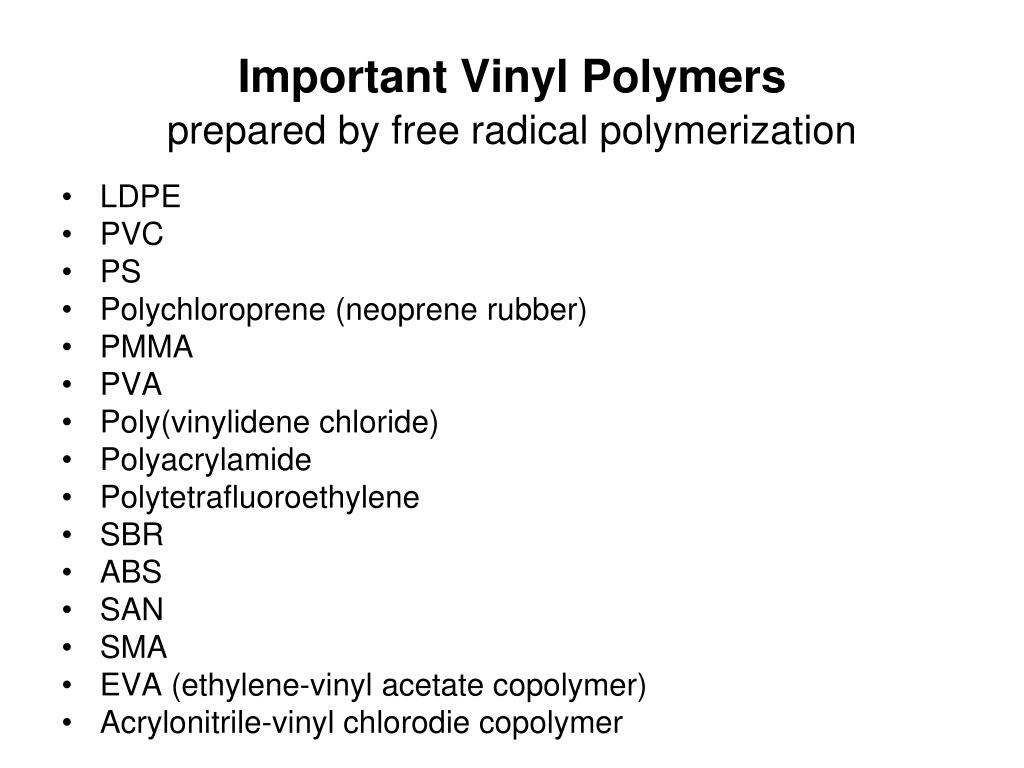Vinyl Chloride Radical Polymerization

But still the term controlled polymerization is not yet clearly defined.
Vinyl chloride radical polymerization. Vc vc α d 1 vc β β d 2 and vc d 3 were used to study the reactivities of the hydrogen atoms in the polymerization and the β hydrogen atoms contributed to the chain transfer. Physical phenomena of polyvinylchloride parti cle formation and reactant species distributions inphas sduring poly merization. Approximately 80 of the world s pvc is produced by the suspension polymerization process. Relevant mechanisms involved in the heterogeneous free radical polymerization of vinyl chloride have been identified including elemen tary chemical reactions.
This paper describes the room temperature living radical polymerization lrp of vinyl chloride in h 2 o thf in the presence of cu 0 or cu i salts as catalysts tren or pei as ligands and iodoform as initiator. Owing to the importance of poly vinyl chloride pvc as the second largest plastic in volume after the polyolefins and above styrene polymers the control of the free radical polymerization of vinyl chloride vc is of high industrial and academic interest. Radical chain growth polymerization of vinyl chloride the following animation illustrates the polymerization of vinyl chloride initiated by radicals. To repeat the animation click on the drawing.
Polymerization of vinyl chloride vc was studied. Natural evolution of hcl from vc occurred in the polymerization. Chemical and physical methods were used to observe irregular structures such as branching double bonds and head to head or tail to tail addition and also to confirm the relation.












































